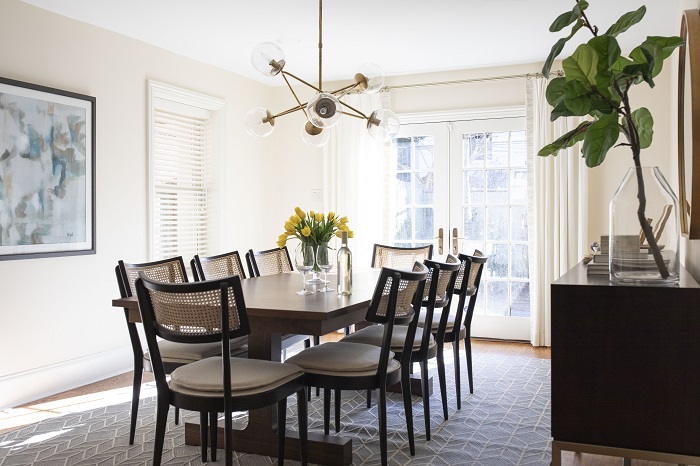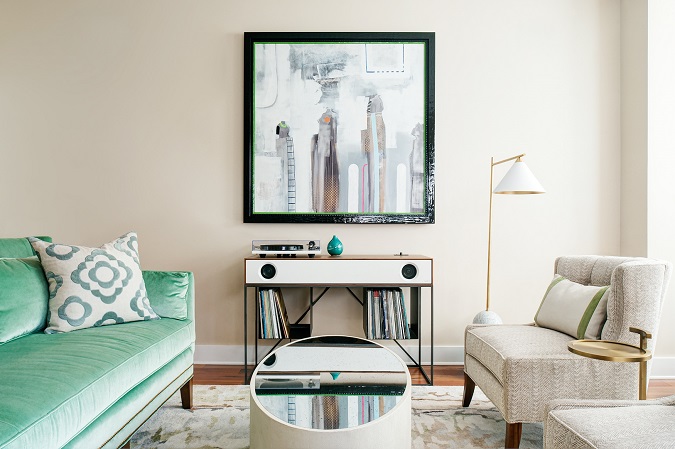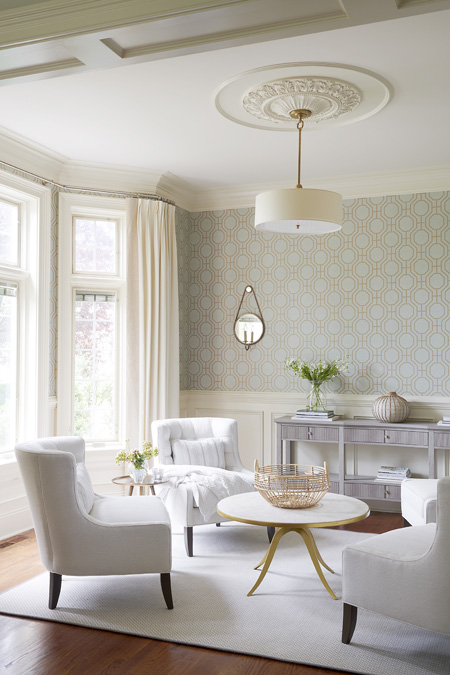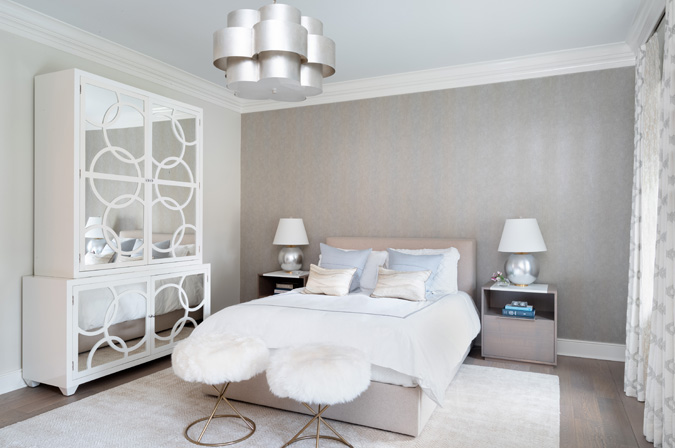What is the “right” size area rug?
One of the questions we encounter most is “how do I know what the ‘right’ size area rug is?” It’s a good question, because nothing can nix a great design like a too small or too large rug. Just like selecting furnishings and lighting, it’s about scale and making sure that all of the elements in a space intersect to create balance.
So, what is the “right size” area rug?
The short answer: it depends on the space. We approach sizing depending on both the type of room and the furniture. For example, a dining room and a bedroom are furnished and used in very different ways. Let’s take a look at a few examples!
Dining room
In a dining room, the rug sits centrally under your table and chairs (and above those, your lighting) so it’s very much an anchor. One hard and fast rule for your dining room rug is that it needs to be large enough that your chairs are still on the rug when pulled out from the table. There’s a practical reason for this – if the rug is too small, you’ll catch the edge every time you pull in your chair. This isn’t just annoying, it’s also damaging to the rug over time. From a design perspective, it defines the space and brings a feeling of intimacy to the dining area.

Living room
For a living room, things are a bit more fluid depending on your furniture plan and the layout of the space. The most typical arrangement involves a rug that is large enough for at least the front legs of the peripheral furniture (like seating and end tables) to be on the rug. This ties the furnishings and accents together.

For more intimate groupings and conversation areas – these are becoming more popular as clients look for ways to structure distinct spaces in open floor plans – we like to go with a rug that fits all seating comfortably. However, it’s key that the rug not be overly large to the point where its borders reach the walls. You want at least six inches of exposed flooring around the perimeter.

*A common mistake in living and family rooms is choosing a rug that’s too small (like a 5’x7′). This can actually make the room feel smaller and lacking in cohesion. We design rooms with a specific size in mind for a reason!
Bedroom
When it comes to selecting the right size area rug for a bedroom, we consider the bed as the focal point. An area rug enhances that focus and, when done right, adds another layer of texture which adds to the feeling of coziness. (Don’t forget the practicality, either; bare feet on hardwood can be a chilly wake up call in the winter.) In here, we use the rug to frame the bed, with at least 18 inches on either side. Placing the rug under the bed but in front of the nightstands creates definition in the space and enhances the overall design.

We hope this has shed some light on that question of “what size is the right size?” and remember, our role is to guide you in making the perfect selection for whichever space we create!
Header image: Music room by Glenna Stone Interior Design; Photo by Rebecca McAlpin
Want our weekly blog post delivered right to your inbox? Click here to sign up!
________________________________________
Glenna Stone Interior Design is an award-winning Philadelphia interior design firm serving Philadelphia, the Main Line, and surrounding cities. Utilizing her background and training in interior design, architecture, and engineering, Glenna specializes in creating interiors for residential and commercial design settings. We invite you to visit our website, view our portfolio, and catch up on the latest interior design concepts on our blog!